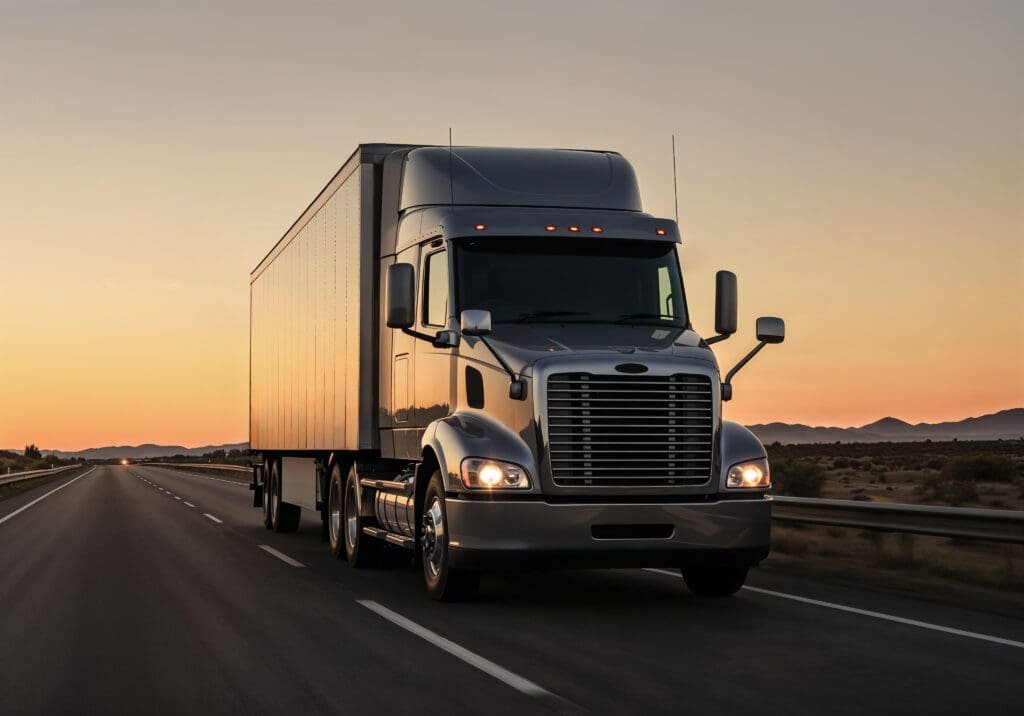If you’ve tried to fill driving positions lately, you already know the struggle is real. Trucking companies across the country are competing for the same limited pool of qualified drivers, and finding reliable talent can feel like searching for a needle in a haystack. The shortage isn’t slowing down either—retirement, turnover, and growing freight demand are keeping the pressure on fleets of all sizes.
That leaves hiring managers with a tough question: should they stick with the familiar, old-school methods like job boards, word-of-mouth, and agencies, or invest in new recruiting software that promises to make CDL driver recruiting faster and smarter?
In this post, we’ll break down how both approaches work, compare their pros and cons, and share practical tips to help you hire truck drivers more effectively. By the end, you’ll have a clearer idea of which path—or combination of both—makes the most sense for your fleet.
The State of Trucking Recruitment Today

Hiring in the trucking industry has never been more competitive. Driver shortages, high turnover, and growing freight demand have created a serious challenge for fleets of all sizes. For many companies, the pressure isn’t just about filling seats quickly—it’s about finding the right drivers who will stay. Every empty truck represents lost revenue, delayed deliveries, and added stress for dispatchers and customers.
Traditionally, fleets leaned on word-of-mouth referrals, job boards at truck stops, newspaper ads, and partnerships with a truck driver recruiting agency. These methods have real advantages: Driver referrals often bring in drivers who already understand the job, and agencies provide quick access to local candidates. For smaller carriers, these approaches can feel comfortable and reliable.
But the limitations are harder to ignore. Traditional hiring often results in smaller candidate pools, slower turnaround times, and higher costs when agencies are involved. Screening applicants manually also eats up valuable hours and doesn’t always ensure a strong match between driver and fleet.
This is where technology is changing the game. Recruiting software helps fleets cast a wider net, streamline screening, and cut the paperwork that slows everything down. By automating repetitive tasks, recruiters can focus on connecting with qualified drivers instead of chasing dead-end applications. For companies facing the ongoing challenge of CDL driver recruiting, this shift isn’t just a trend—it’s becoming essential to staying competitive.
Traditional Hiring Methods – Strengths & Weaknesses

Before technology reshaped recruiting, most fleets used old-school methods: job boards at truck stops, newspaper ads, word-of-mouth referrals, and partnerships with a truck driver recruiting agency. For many years, these approaches worked well enough to keep trucks moving, and they still play a role in certain situations today.
One of the biggest strengths of traditional hiring is trust. A referral often brings in someone who understands the job and feels loyalty to the person who recommended them. Agencies can also deliver quick access to local talent, which is especially useful when fleets need to hire truck drivers urgently. These methods carry a personal touch that technology can sometimes overlook.
But sticking exclusively to traditional methods is risky. The process is slow—manual screening, phone calls, and waiting for referrals all take time fleets can’t afford. Local advertising also limits reach, cutting off opportunities with qualified drivers from outside the region.
Working with a truck driver recruiting agency can ease some of these pain points, but it comes with a cost. Fees add up quickly, and while agencies may help fill a seat, they don’t always prioritize long-term retention. Many fleets end up cycling through hires faster than expected, which adds to costs and turnover frustrations.
Traditional methods remain useful—especially for smaller fleets—but in today’s competitive market, relying on them alone leaves companies at a disadvantage.
Recruiting Software – Modernizing CDL Driver Recruiting

The trucking industry moves fast, and when seats are empty, companies lose money by the mile. That’s why more fleets are turning to recruiting software to speed up the process and make smarter hiring decisions. Instead of relying on manual paperwork and phone calls, these tools help carriers stay organized, connect with more candidates, and make data-driven choices.
Here are some of the biggest benefits of using recruiting software in trucking:
- Faster Screening
Sorting through applications one by one takes hours. Recruiting software can quickly scan resumes, highlight qualified candidates, and even flag missing requirements. This means recruiters spend less time on paperwork and more time talking to drivers who are truly a good fit. - Wider Reach
The software integrates with job boards, social media, and even referral programs. That means fleets can post once and have the opening appear across multiple platforms, giving CDL driver recruiting efforts a much broader audience. - Smarter Matching
Advanced systems use algorithms to pair candidates with roles that fit their skills, certifications, and preferences. For fleets, this reduces the risk of hiring someone who quits after a few weeks because the job wasn’t what they expected. - Compliance-Friendly
Trucking is heavily regulated, and keeping track of licenses, medical cards, and safety records can be overwhelming. Recruiting software helps manage these details, making it easier to stay compliant and avoid costly penalties. - Improved Retention
By hiring drivers who are a better match from the start, companies see fewer quick turnovers. That means less time spent filling the same role over and over again.
For companies working hard to hire truck drivers in a competitive market, these tools can be game-changers. Instead of chasing applications or juggling spreadsheets, fleets gain a streamlined system that keeps recruiting on track and moving forward.
Recruiting Software vs. Traditional Hiring – Which Performs Better?

When it comes to bringing new drivers on board, the debate often comes down to one question: should fleets stick with what they know or embrace technology? Both recruiting software and traditional hiring have their place, but they perform very differently depending on a company’s size and needs.
Traditional methods often shine for smaller, community-driven fleets. A referral from a trusted driver or a connection through a local agency can build loyalty that software alone can’t replicate. These approaches also work when local knowledge is important, or when recruiters prefer face-to-face conversations. The downside is speed—relying only on these methods slows the process and limits how far a fleet can reach when it needs to hire truck drivers quickly.
Recruiting software, on the other hand, is built for efficiency. Larger carriers benefit from centralized systems that track applications, manage compliance, and reach candidates across multiple platforms. Instead of waiting for drivers to apply, fleets can proactively connect with qualified candidates who fit specific requirements. This often leads to faster hires and stronger retention.
That said, traditional hiring still has value. A truck driver recruiting agency may be worth the investment when vacancies are urgent or markets are tight. But for fleets aiming to scale and build long-term stability, recruiting software usually provides the more sustainable advantage.
Hybrid Strategies for Smarter Hiring

In reality, most fleets don’t have to choose between old-school recruiting and new technology. The most successful companies often use both, blending the personal touch of traditional methods with the efficiency of recruiting software. This hybrid approach helps fleets reach more candidates, save time, and still keep relationships at the center of their hiring process.
Here are a few ways trucking companies can build a balanced strategy:
- Use Software for the First Screening
Let recruiting software handle the heavy lifting by sorting applications and checking qualifications. Once you’ve got a shortlist, recruiters can step in to connect with drivers personally and see if they’re a good cultural fit. - Pair Agencies with Technology
A truck driver Recruiting agency can be valuable when you need to fill positions quickly. When paired with software, fleets gain more transparency over the process—tracking candidates, monitoring communication, and avoiding duplicate efforts. - Lean on Referrals, but Manage Them Smartly
Word-of-mouth is still one of the best ways to find reliable drivers. By running referral programs through a software system, you can track which programs work best and reward employees who bring in great candidates. - Create a Feedback Loop
Recruiting doesn’t end once a driver is hired. Use insights from software to see which sources bring the most successful hires, then double down on those methods while scaling back the ones that don’t.
When fleets combine traditional practices with modern tools, they get the best of both worlds: efficiency without losing the human touch. For companies working hard to hire truck drivers in a competitive market, this balanced approach can be the difference between always playing catch-up and finally staying ahead.
Actionable Tips for Better CDL Driver Recruiting

At the end of the day, hiring success in trucking comes down to more than just the tools you use—it’s about how well you connect with drivers and present your company as a place they want to stay. CDL driver recruiting isn’t just filling a seat; it’s about finding people who see long-term value in joining your fleet. That requires fleets to think beyond quick fixes and focus on building stronger relationships with potential hires.
One of the most effective ways to stand out is by polishing your employer brand. Drivers want to know what makes your company different, whether it’s steady miles, flexible schedules, or reliable pay. When these benefits are clearly communicated in job postings and reinforced in conversations, candidates are more likely to take notice. Pairing that clarity with a smooth application process is equally important. Too many fleets lose great candidates simply because the application is clunky or takes too long to complete. Making the process mobile friendly and simple can keep more drivers engaged from the start.
Retention should also be part of the recruiting strategy. Following up with drivers after they’re hired, gathering feedback, and addressing concerns early can prevent turnover. This not only saves the cost of rehiring but also helps build trust and loyalty within the team. Recruiting software can support this by tracking trends and offering data that shows where improvements are needed, but personal communication still plays a critical role.
Improving recruitment in trucking isn’t about chasing the latest trend—it’s about blending smart tools with thoughtful practices. Companies that do this well are far more likely to attract qualified drivers and keep them for the long haul.
Wrapping It Up: Finding the Best Path for Trucking Recruitment
The challenge of bringing in new drivers isn’t going away anytime soon, but fleets have more options than ever to tackle it. Traditional hiring methods—like referrals, local ads, and working with a truck driver recruiting agency—still deliver value when personal connections matter most. Yet, they can’t always keep up with the speed and scale the industry demands.
That’s where recruiting software makes a difference. By automating the early stages of CDL driver recruiting, streamlining compliance checks, and expanding reach, it gives companies the tools to fill positions faster and with stronger candidates. The result isn’t just quicker hires but also better retention, which saves money and strengthens the fleet over time.
The real takeaway? There’s no single “right” answer. The smartest fleets find balance—using technology to stay efficient while still keeping the human touch that drivers appreciate. By blending both approaches, companies put themselves in the best position to hire truck drivers consistently and stay ahead in a competitive market.
If your team is ready to improve its recruiting game, now’s the perfect time to evaluate your current process, explore new tools, and test a hybrid strategy. With the right mix of tradition and technology, you can turn hiring from a headache into a true advantage for your fleet.



